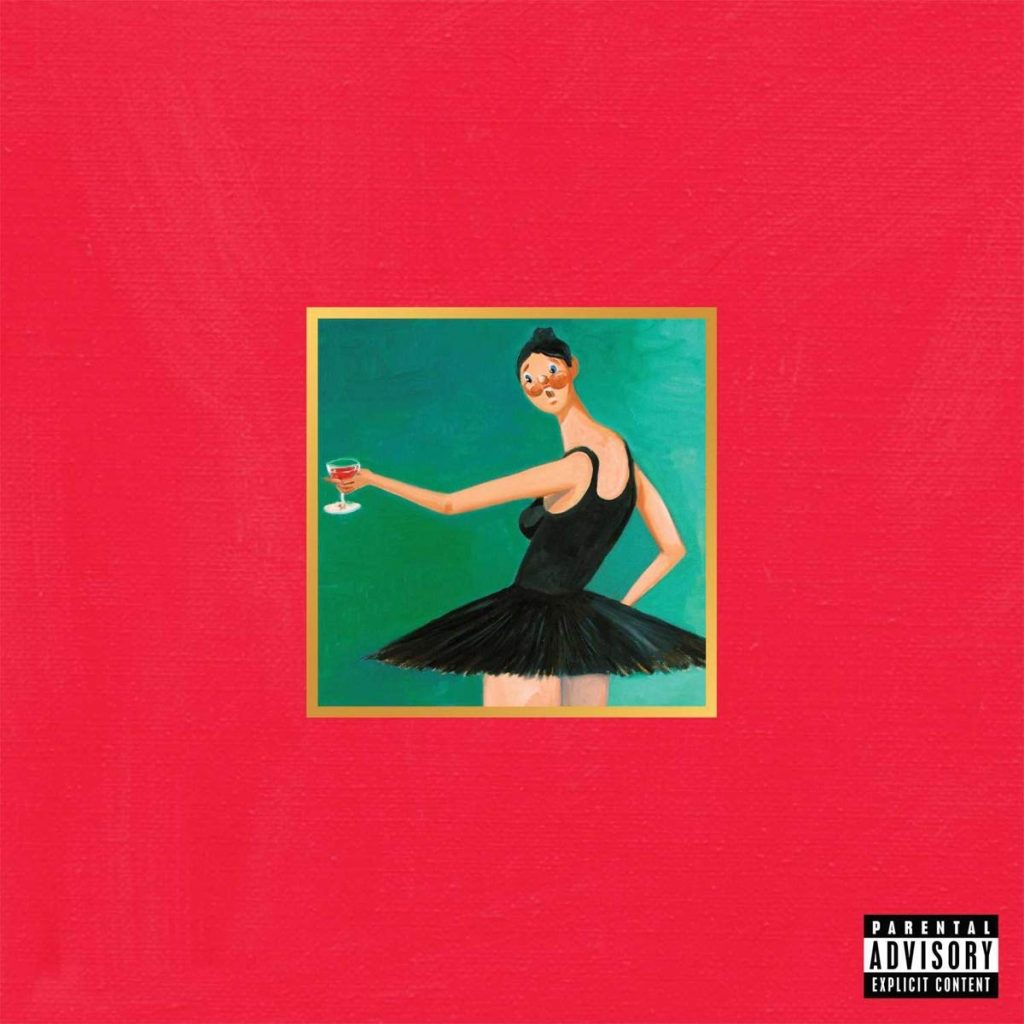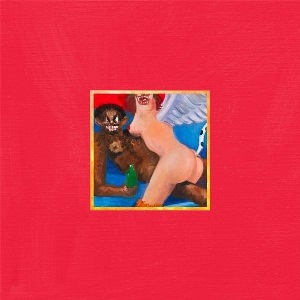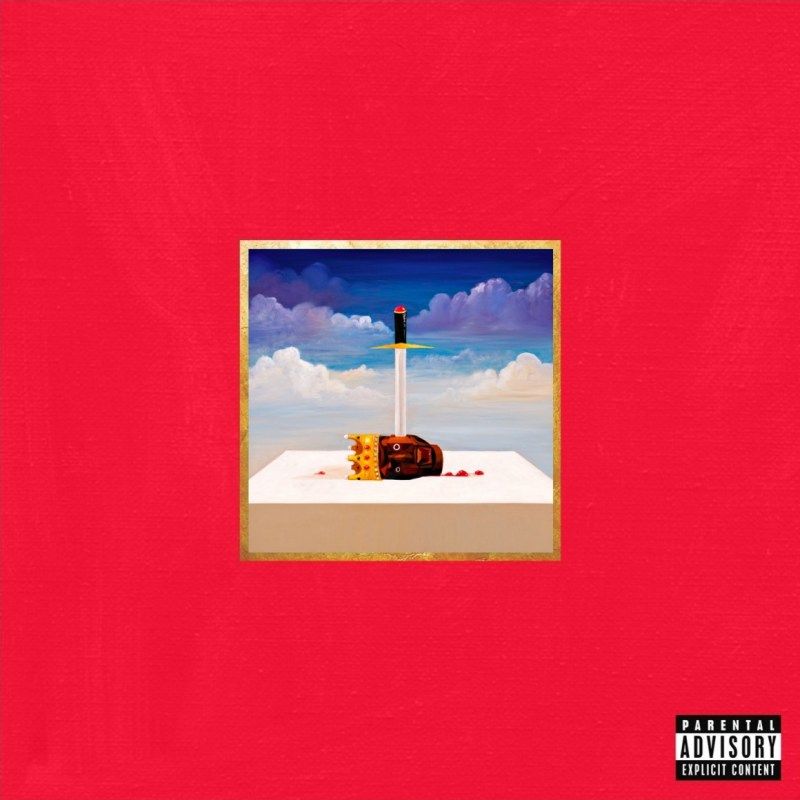
You might think you’ve peeped everything that people have come up with to kill time in lockdown life, but trust me, you haven’t. As a consequence of the global COVID-19 outbreak, the first case of which traces back to almost exactly a year ago, many of us were forced to find new outlets for our creative pastimes. This was no different for music aficionados, with tens of thousands of them taking to a Facebook page titled “The Greatest Album of All Time” (now relabeled “The Greatest Movie of All Time” in search of a new purpose). Over a grueling voting process with more than a thousand one-on-one matchups between the widest variety of genres, two albums challenged each other in the final. One was Kendrick Lamar’s To Pimp a Butterfly—an album which many already consider pivotal in the music history of the 21st century, a mere five years after its release. The winner, however, was an album that’s twice as old, but which has a similarly prominent ring to its name: Kanye West’s My Beautiful Dark Twisted Fantasy.
While this online excursion into collective music criticism is by no means representative of the global taste, it speaks to one undeniable fact: ten years after its release on 22 November 2010, My Beautiful Dark Twisted Fantasy (or simply MBDTF) has left a mark in the annals of music history that is not easily erased, and which has by now stood its first real test of time. Reason enough to dive a little deeper into what seasoned Kanye veterans as well as first-time listeners (should they exist) can still take away from the album in this day and age.
I need a happy beginnin’, middle, and endin’
While I’ve heard bits and pieces of MBDTF—most notably its unreal sampling of King Crimson’s “21st Century Schizoid Man” on “POWER”—before, it wasn’t until 2015 that I decided to give the entire oeuvre a proper listen. Once “Dark Fantasy”, the album’s opening track, transitioned from Nicki Minaj’s twisted fairytale monologue to the framing question of the entire album, “Can we get much higher?”, Kanye managed to rouse a feeling inside of me that I never felt before or after when listening to an album for the first time: He gave me the impression of having listened to it a hundred times over before. As if the melodies were all hidden in the folds of my brain already, just waiting to be uncovered. It would be reductive to claim that MBDTF shines brightest in its title track, but it sure sets the scene for all that’s to come in the ensuing 68 minutes.
Ultimately, however, “Dark Fantasy” is just the garish front gate to Ye’s mind palace, with “Gorgeous” being the tableaux-clad foyer and “POWER” the coronation room. And given its oozing grandeur and baroque aspirations, there really is no other structure that describes MBDTF as well as the very epitome of architectural decadence. But there would be nothing dark and twisted about Kanye’s fantasy if magnanimous self-appraisals were where it stopped. Before digging deeper into the content itself however, it is first worth examining who Kanye gathered around himself to create it.

Of Kingpins and Monsters
MBDTF was a springboard: Certainly for Kanye, for whom it served as the trampoline jump back into the superstar limelight after his iconoclast meltdown at the hands of a confused Taylor Swift at the 2009 MTV Music Awards. But if we learned one thing from MBDTF, then it’s that Kanye excels most as a producer and an amasser of talented individuals, whom he manages to seamlessly weave into his own personal narrative. Two artists stand out above all others here. For one, ex-kingpin Pusha T, who scored the run of his life on “So Appalled” and “Runaway”, and who later managed to connect the dots with DAYTONA, his massively successful 2018 album, which was, of course, also produced by Kanye.
The other success story of MBDTF is that of Nicki Minaj. While Nicki is now almost universally acknowledged as one of the most important female rappers of her time, it was precisely ten years ago that the world really caught up with her abilities. Instrumental in her breakthrough would be her verse on “Monster”. Not only did Nicki demolish any opposition with her tight control of flow and vivacious imagery, but she also blew her co-performers Jay-Z, Rick Ross, and Kanye himself completely out of the water. One of the main contributors to her illustrious artistic persona is her frequent usage of alter egos—in this case that of the soft-voiced and feminine “Barbie”, contrasted with that of the more forceful and vulgar “Roman Zolanski”—alternating throughout the verse. It is this musical versatility, paired with her seemingly endless creativity, that helped establish Minaj at the forefront of her genre. After all, everybody knows she’s a motherfucking monster. Her debut album, Pink Friday, as well as everyone’s jaw, dropped on the same day as MBDTF, paving the way for the next decade to come.
Inter-century anthems based off inner-city tantrums
While MBDTF propelled forward quite a few artists, it also pushed a lot of buttons. The main plotline of the album revolves around West’s introspection into his own shortcomings and pitfalls: “All of the Lights” talks about the severe public scrutiny that he faces as a global superstar, “Devil in a New Dress” depicts his tumultous stint with Amber Rose, and “Runaway” finally illustrates his general awfulness in handling relationships in a proverbial “toast to the douchebags”. Admittedly, self-critique is rare for a man who thinks of himself as “Shakespeare in the flesh” or simply “a God”, but MBDTF served as Kanye’s canvas to lay out many of the troubles that he has with himself and the world.
It is the latter though, his troubles with the world, which is perhaps even more insightful to further examine than his personal woes. Here, West offers a transition from the private to the public: Kanye recognizes the platform that he enjoys and uses it to address the structural inequalities that African Americans perpetually suffer from. “Gorgeous” thematizes the American prison system, including its notorious disparity between a sentence for crack versus cocaine possession—an issue which was so dear to him, that in late 2018 he ventured down to the White House in a bizarre meet-up with President Donald Trump to address it. His later and earlier escapades aside, however, MBDTF depicts a moment of great clairvoyance for Yeezy, which he used to thematize the issue of systematic Black oppression on a larger stage than he ever had before.

The societal critique serves as an inner frame for the story: it is being picked up in “Gorgeous” and continued in “POWER”, then goes under in favor of superstar confessions for much of the album, just to resurface most prominently in the final two tracks: first “Lost In the World”, introducing Gil Scott-Heron’s lyrical monologue, “Comment #1”, before seamlessly leading into the album’s pivotal outro track.
We say that it is the first and last impression of an encounter that has the strongest effect on us, and this is where Kanye shines most brilliantly: Instead of claiming these two focal points of the album for himself, he uses them to spotlight My Beautiful Dark Twisted Fantasy’s two biggest takeaways. He starts with Nicki, who’s warning us what’s to come, as if foreseeing her own meteoric rise in the wake of her “Monster” performance and the drop of Pink Friday, and he finishes with a direct sample by Gil Scott-Heron in what may be considered as one of the most emphatic appeals to societal change ever recorded on tape.
Sure, we might first remember Murciélagos, the “abomination of Obama’s nation”, or half-hour short films featuring elaborate ballet choreographies when we think back to My Beautiful Dark Twisted Fantasy, but to me, it is the final verse of the album that echoes its overarching message most clearly: Who will survive in America?
stay gold ponyboy
